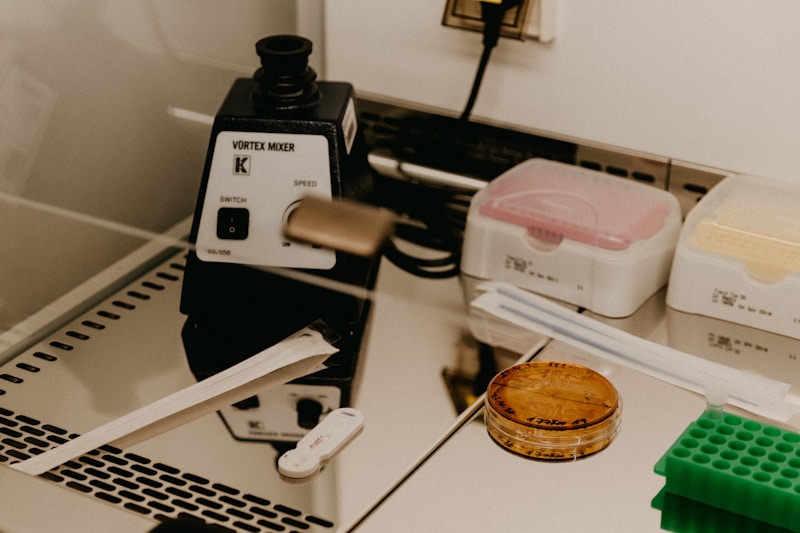Questions and Answers
Which type of solution contains a relatively low amount of solute compared to the solvent?
Dilute solutions
What distinguishes gels from other colloidal solutions?
They have unique mechanical properties
Which type of solution will eventually precipitate or undergo a change to become a more stable state?
Unsaturated solutions
In which type of solution are small particles or dispersed phases suspended in a continuous phase?
Signup and view all the answers
What is true about concentrated solutions?
Signup and view all the answers
Which type of solution is composed of a solvent and a polymer?
Signup and view all the answers
Which type of solution is also known as a 'true solution'?
Signup and view all the answers
What distinguishes heterogeneous solutions from homogeneous solutions?
Signup and view all the answers
What happens when more solute is added to a saturated solution?
Signup and view all the answers
Which type of solution contains more solute than the saturation amount at a given temperature and pressure?
Signup and view all the answers
In which type of solution are all constituents present in the same phase?
Signup and view all the answers
What term is used to describe colloidal dispersions or suspensions that are not true solutions?
Signup and view all the answers
Study Notes
Understanding Solutions
Solutions are a fundamental concept in chemistry, physics, and other scientific fields, yet they extend to a myriad of everyday situations. In this article, we'll explore the various types of solutions, focusing on their scientific aspects for the sake of clarity and precision.
Types of Solutions
- Homogeneous solutions:
A homogeneous solution, also known as a true solution, is a single, uniform phase with a consistent composition throughout. All the constituents in a homogeneous solution are present in the same phase, typically either in the form of a gas, liquid, or solid dissolved or dispersed in another medium.
- Heterogeneous solutions:
Heterogeneous solutions, on the other hand, are composed of two or more phases. These phases are distinct from one another in terms of their physical state or composition, such as oil and vinegar or salt and water. Heterogeneous solutions are not true solutions, but rather colloidal dispersions or suspensions.
- Saturated solutions:
A saturated solution is a homogeneous solution containing the maximum amount of solute that can be dissolved in the solvent at a given temperature and pressure. When more solute is added to a saturated solution, it precipitates, forming a solid or a second liquid phase.
- Supersaturated solutions:
A supersaturated solution is a homogeneous solution that contains more solute than the saturation amount at a given temperature and pressure. These solutions are metastable; they will eventually precipitate or undergo some other change to become a more stable state.
- Unsaturated solutions:
An unsaturated solution is a homogeneous solution that contains less solute than the saturation amount at a given temperature and pressure. These solutions are stable and will not undergo a phase transition when the solute concentration is increased.
- Concentrated solutions:
Concentrated solutions contain a relatively high amount of solute compared to the solvent. They are often used in various applications, such as electrolyte solutions, fuel additives, and chemical reactions.
- Dilute solutions:
Dilute solutions contain a relatively low amount of solute compared to the solvent. They are often used in chemical analysis and titration experiments, where the concentration of the solute needs to be precisely known.
- Multicomponent solutions:
Multicomponent solutions, also known as ternary or quaternary solutions, contain more than two solutes dissolved in a single solvent. These solutions are common in the pharmaceutical and petroleum industries.
- Polymer solutions:
Polymer solutions are composed of a solvent and a polymer, with the polymer being dissolved or dispersed in the solvent. These solutions are used in the manufacturing of plastics, coatings, and adhesives.
- Colloidal solutions:
Colloidal solutions are heterogeneous systems composed of small particles or dispersed phases suspended in a continuous phase. Examples of colloidal solutions include fog, milk, and paints.
- Gels:
Gels are a special type of colloidal solution where the dispersed phase forms a network structure, which traps the continuous phase. Gels are viscoelastic materials with unique mechanical and rheological properties.
As you can see, solutions are not just limited to the scientific realm but also permeate everyday life. Understanding the different types of solutions and their properties is essential for interpreting everyday phenomena and advancing our understanding of the natural world.
Studying That Suits You
Use AI to generate personalized quizzes and flashcards to suit your learning preferences.
Description
Learn about homogeneous, heterogeneous, saturated, supersaturated, unsaturated, concentrated, dilute, multi-component, polymer, colloidal solutions, and gels. Explore the properties and distinctions of various types of solutions, from scientific applications to everyday phenomena.




